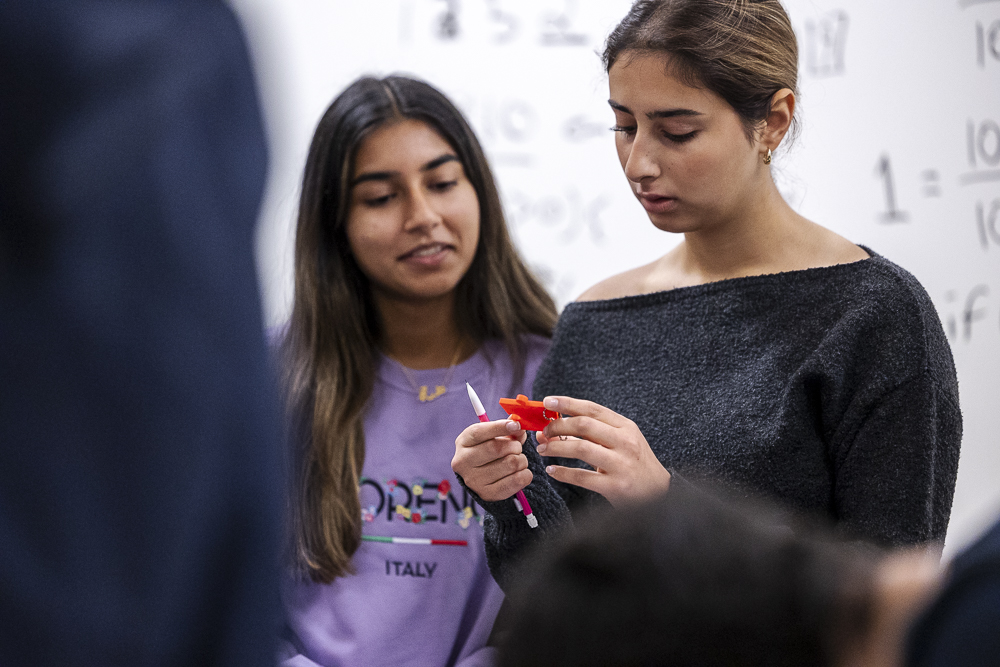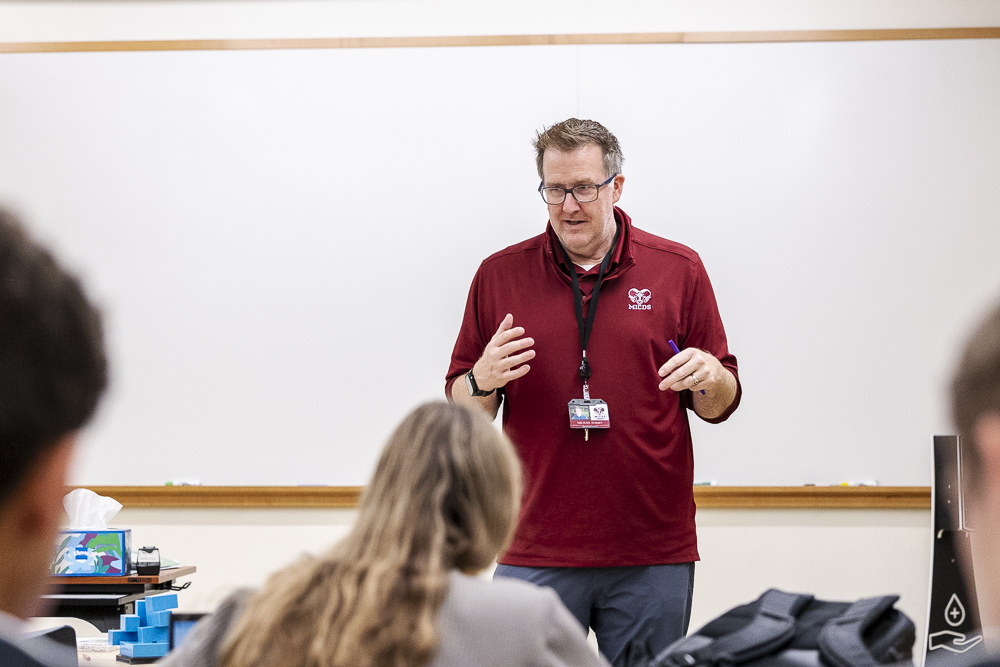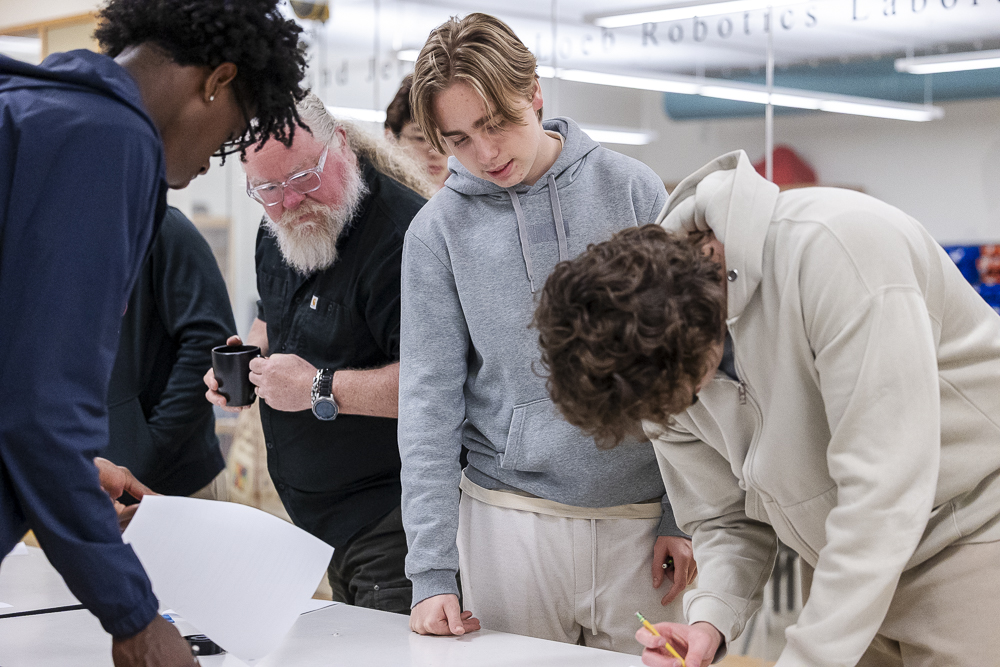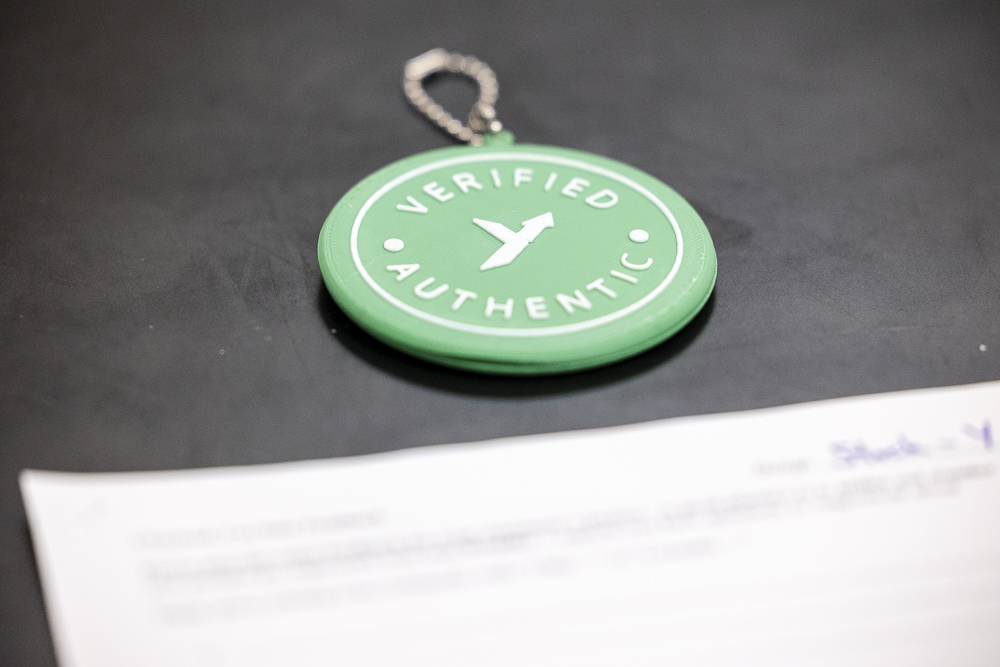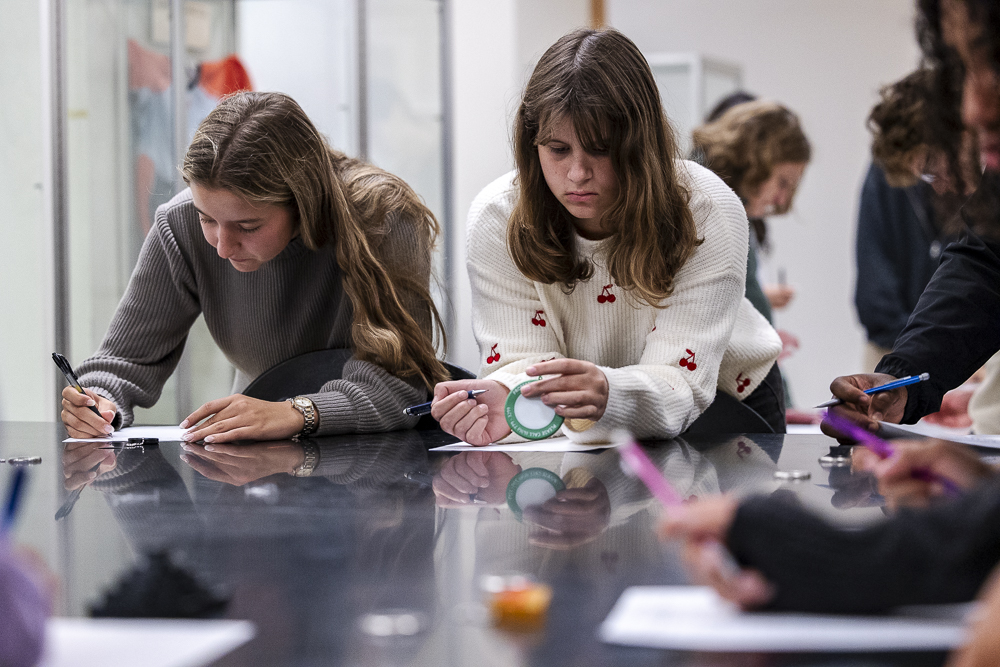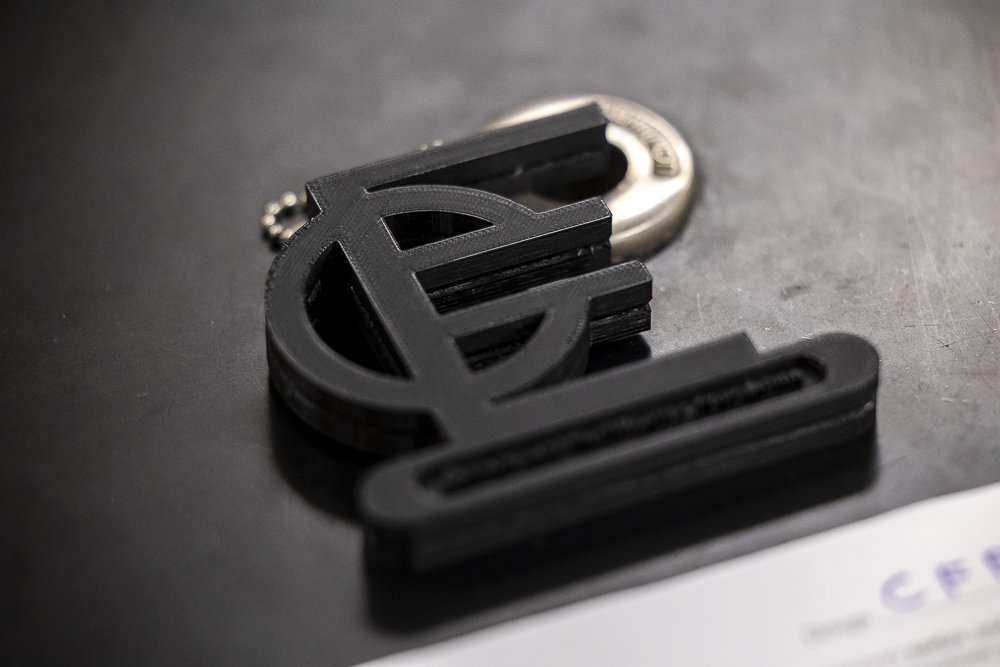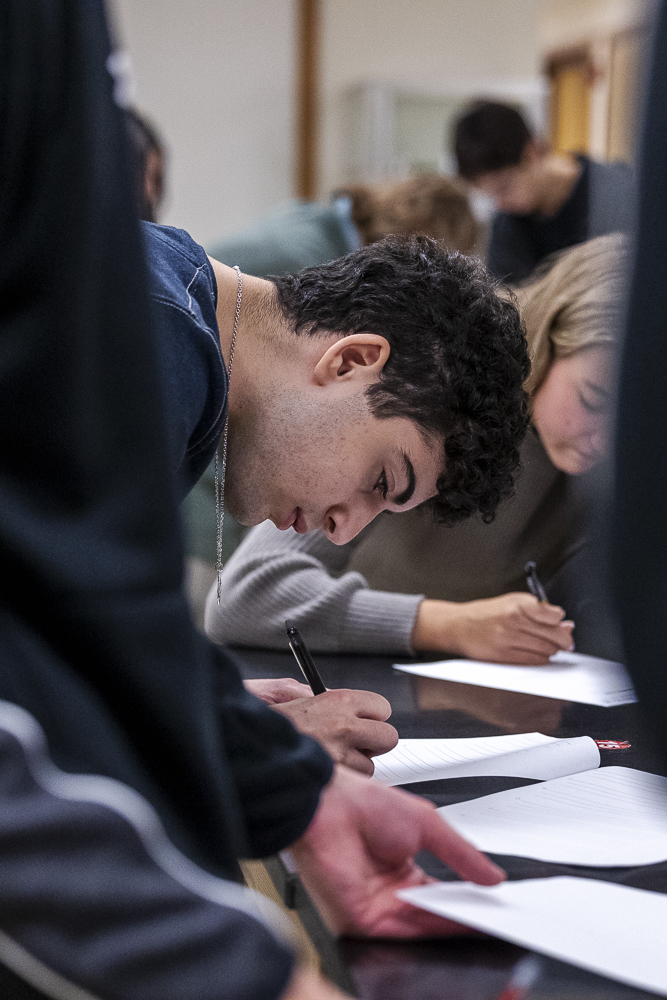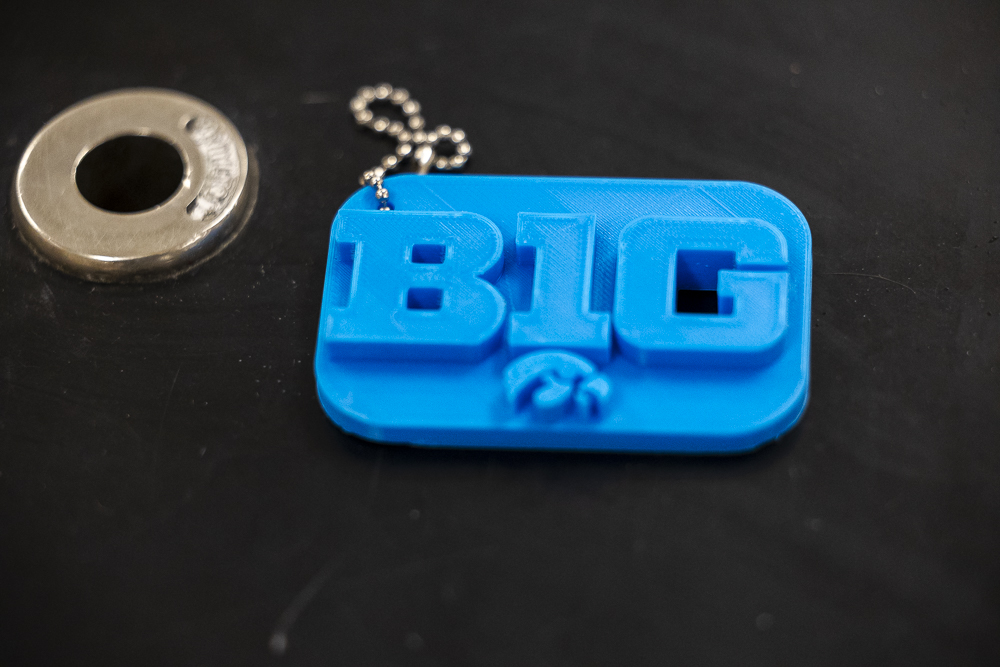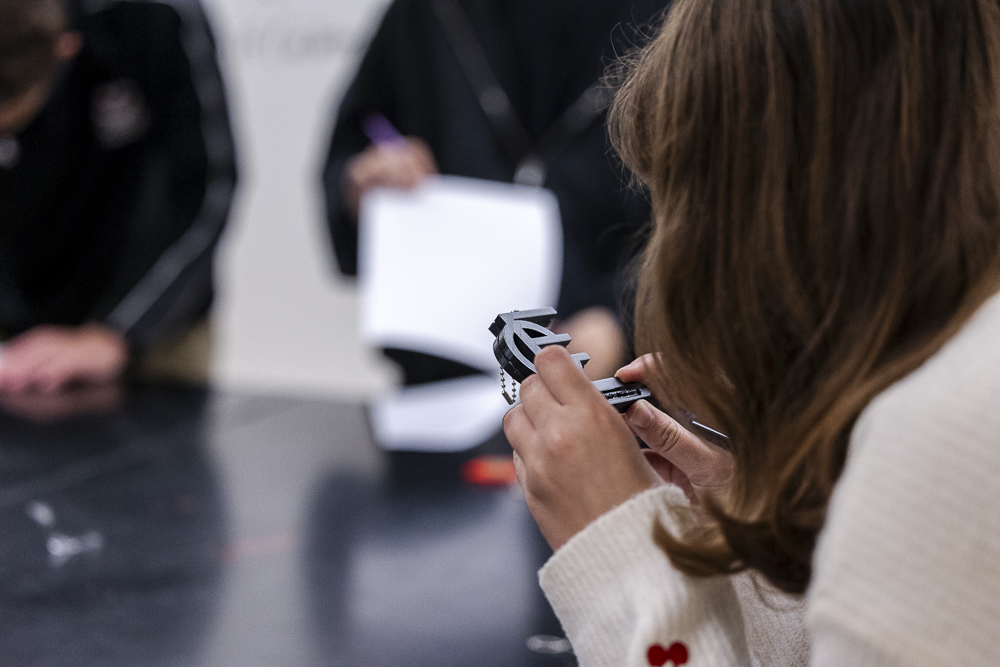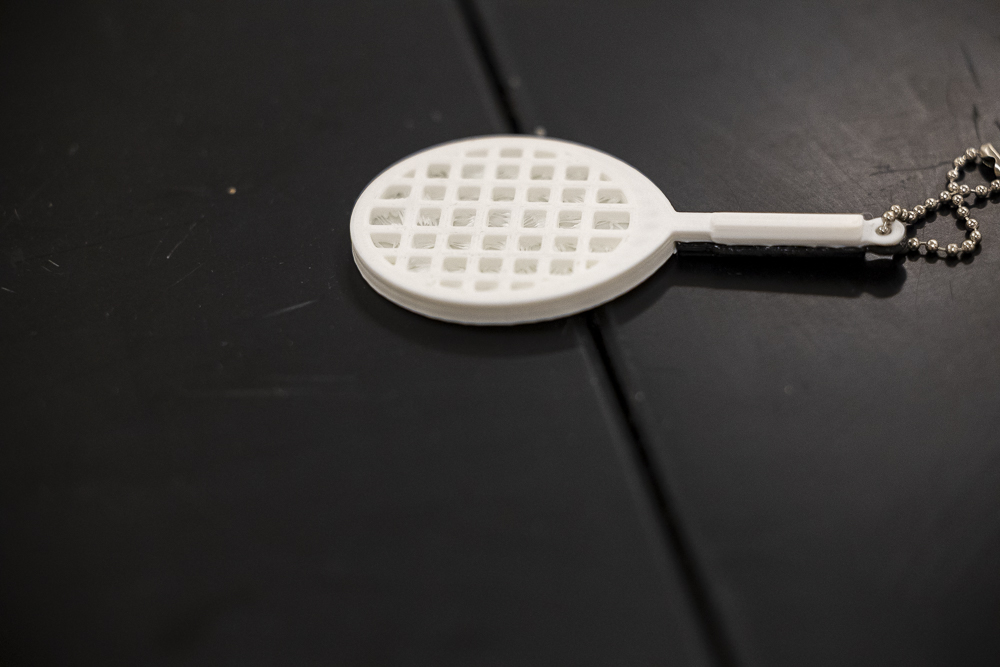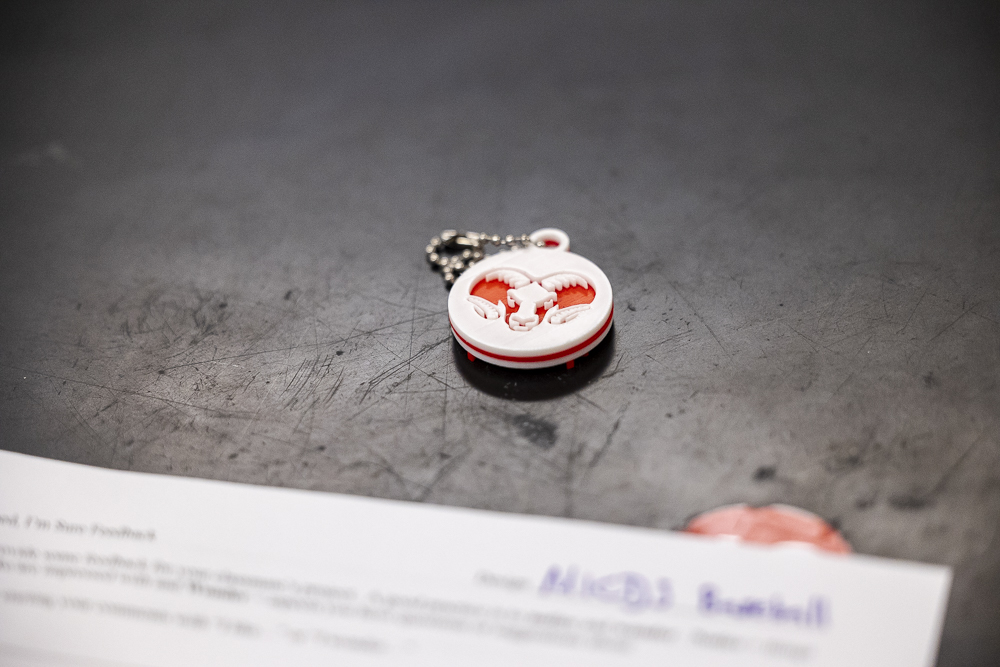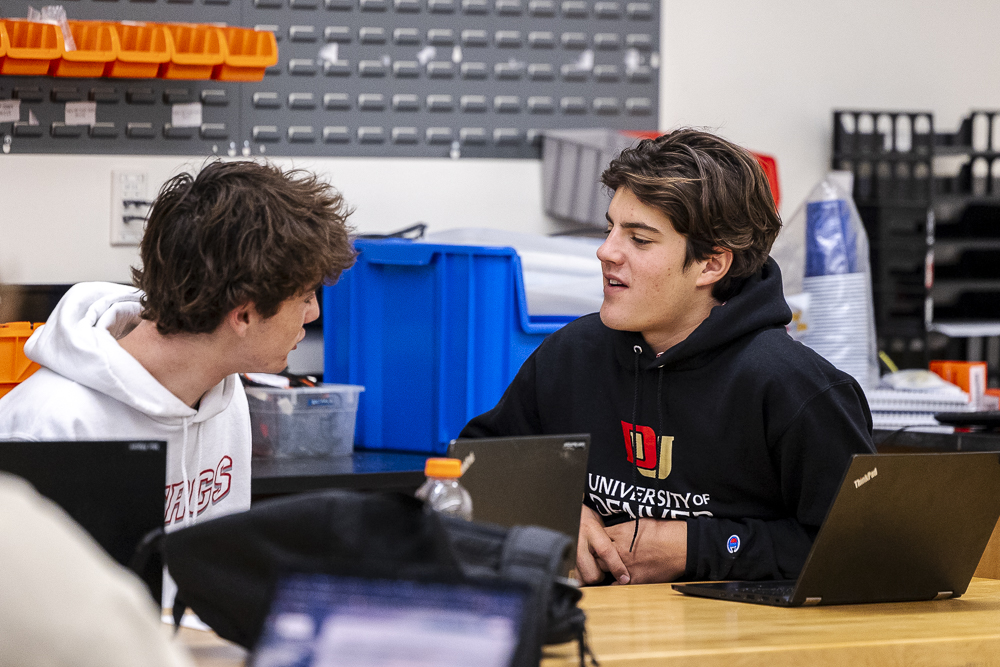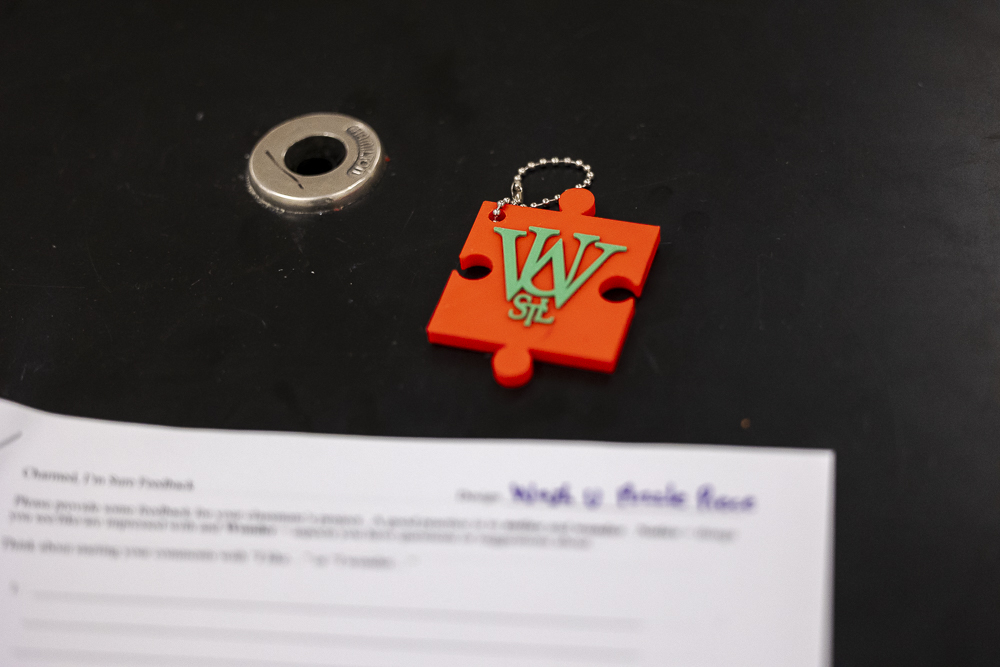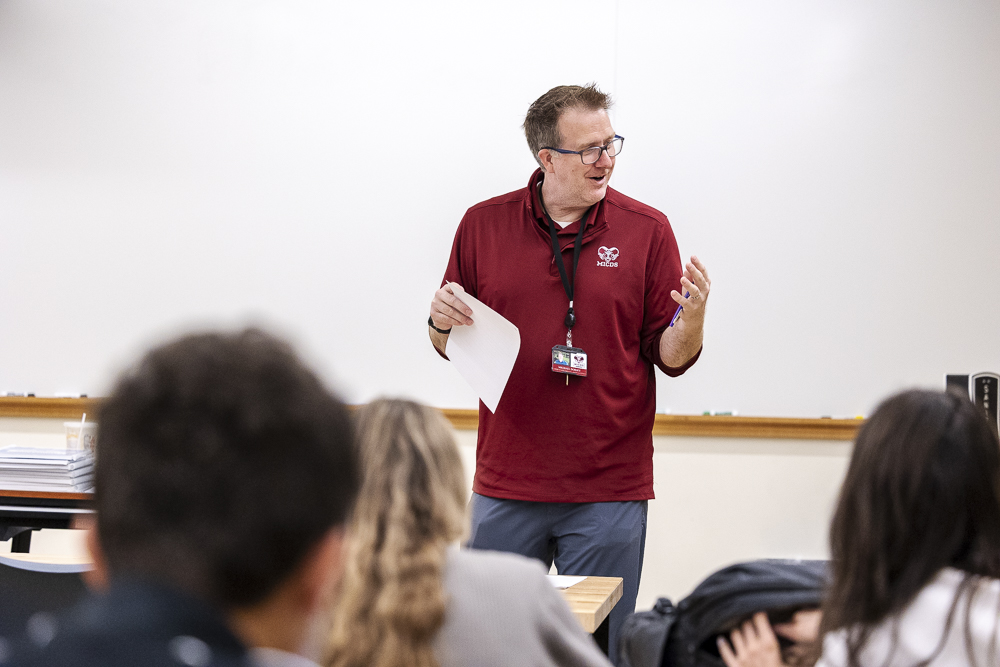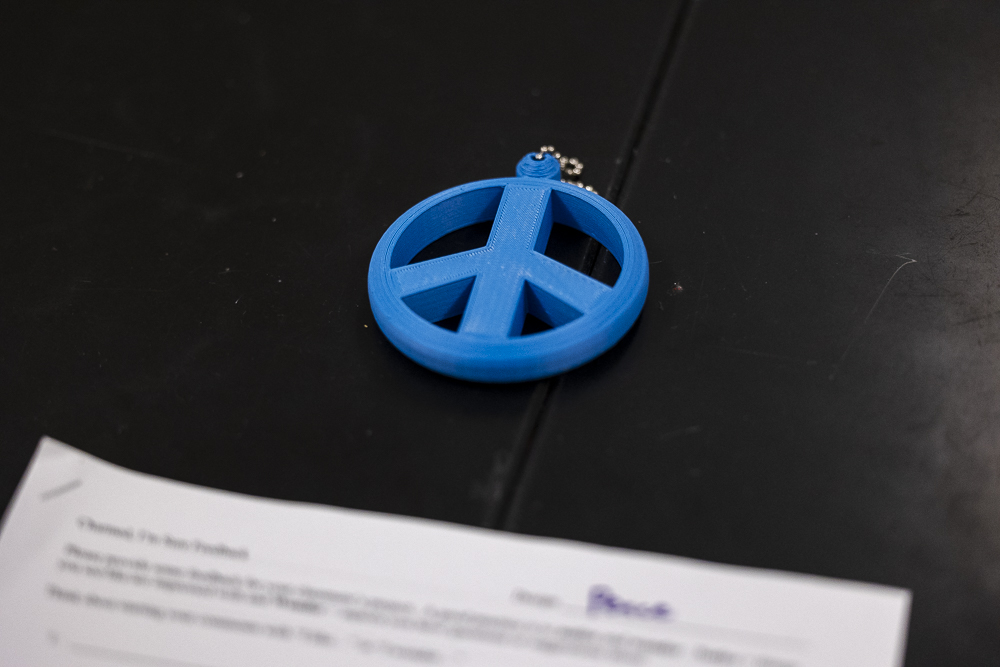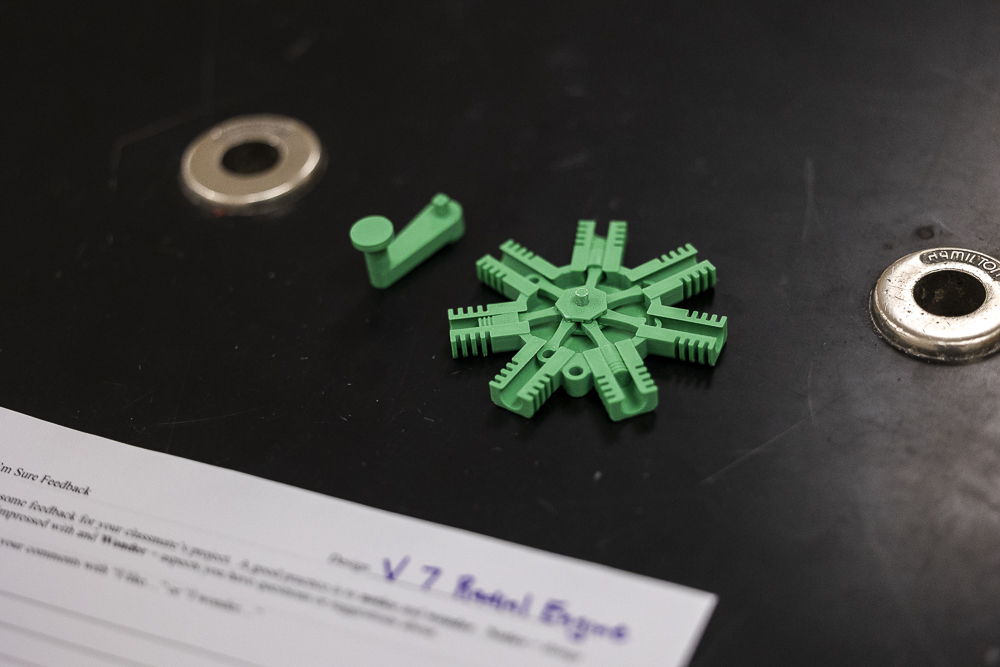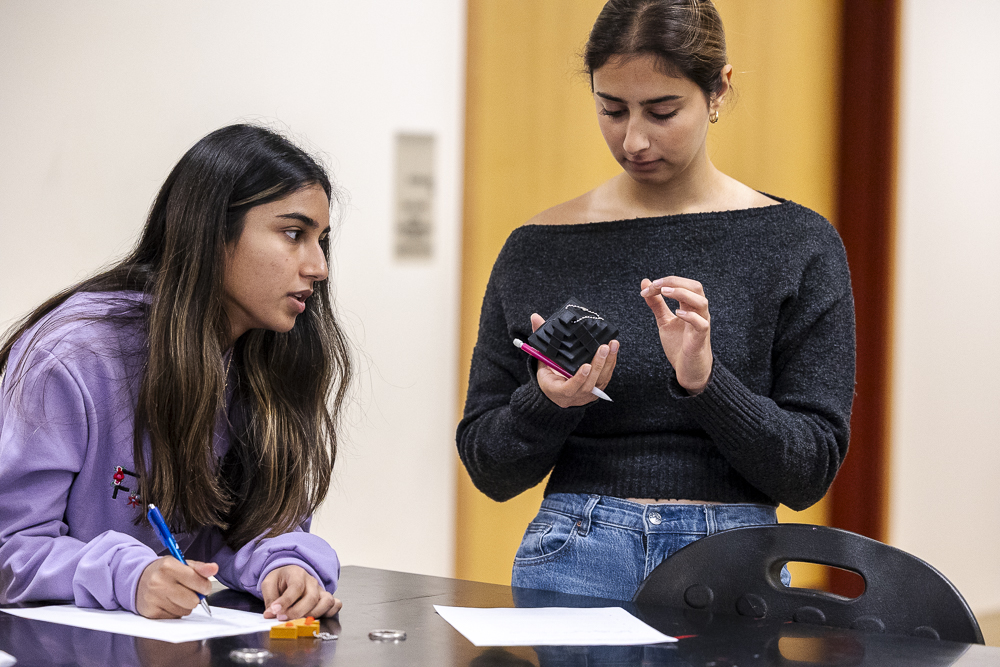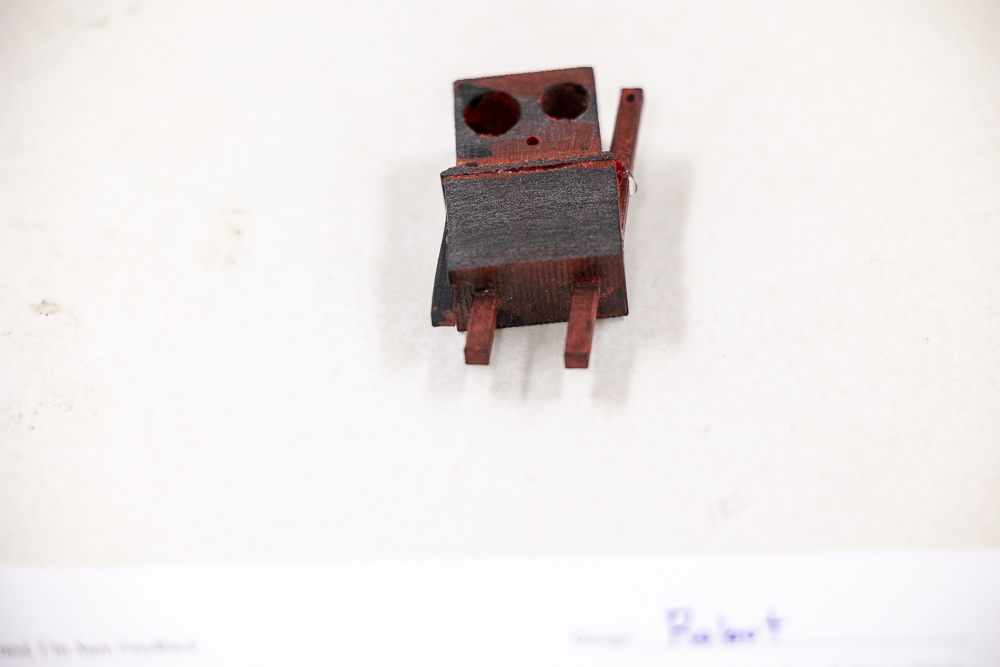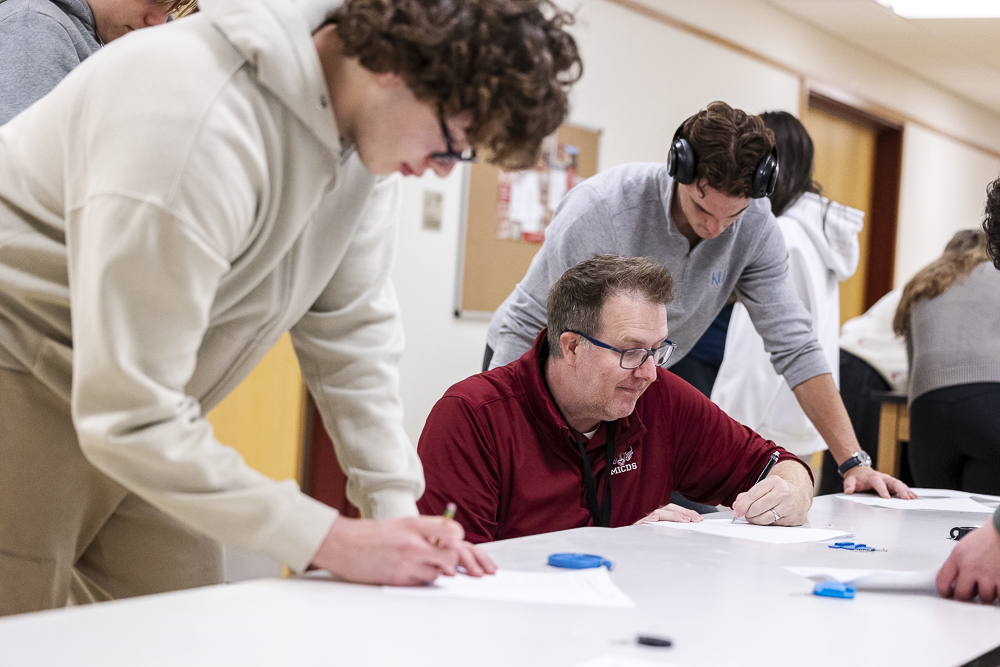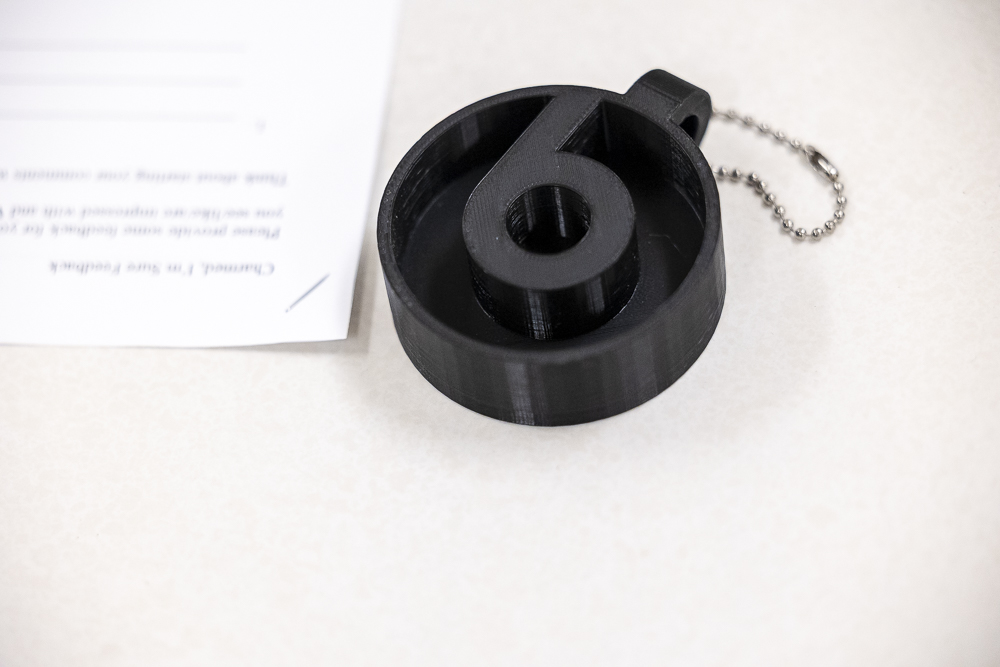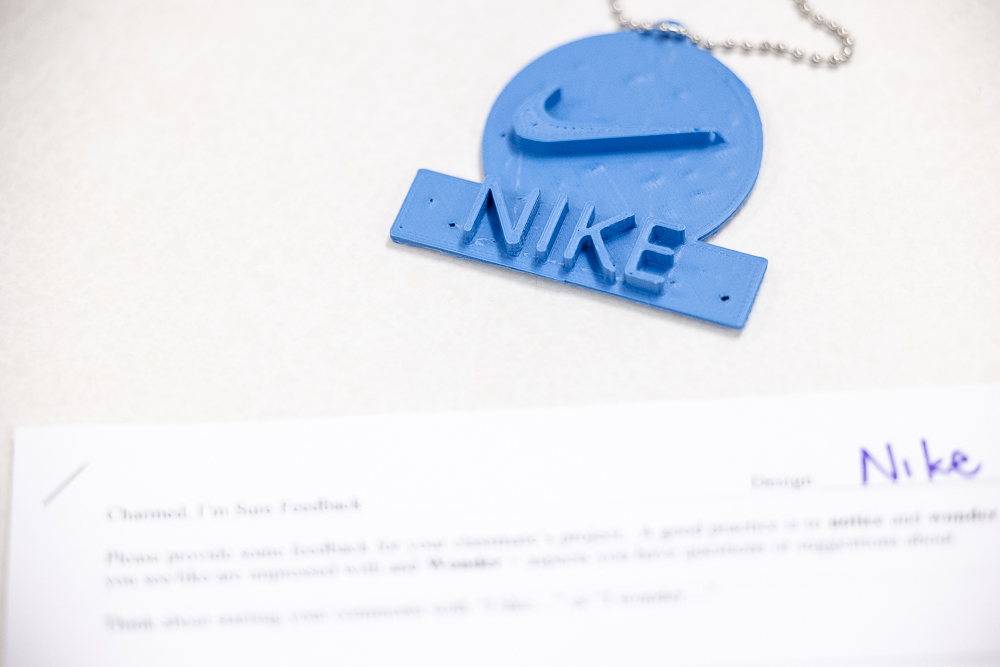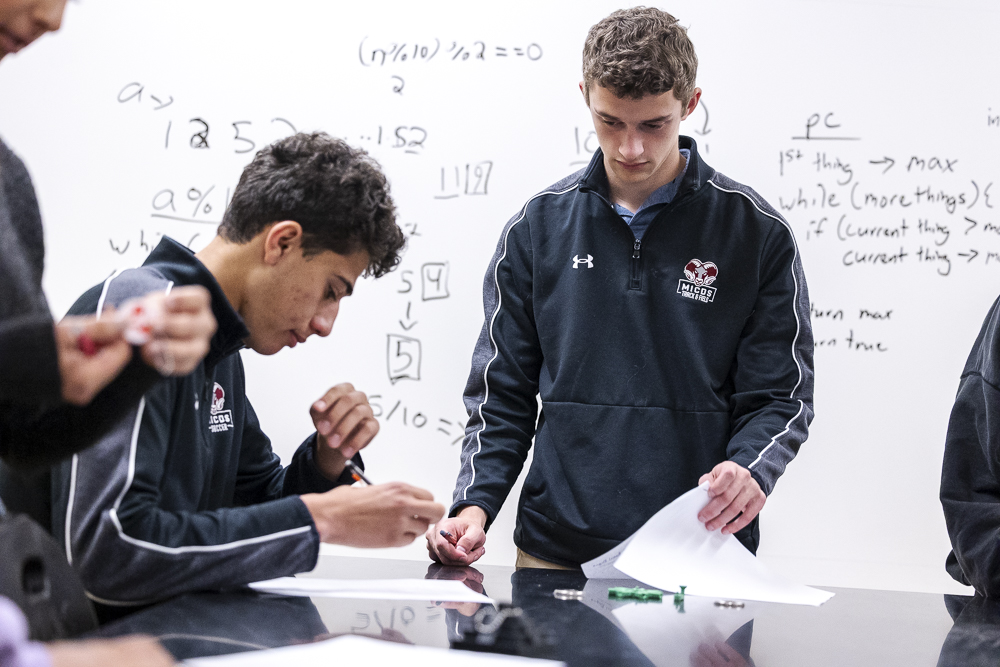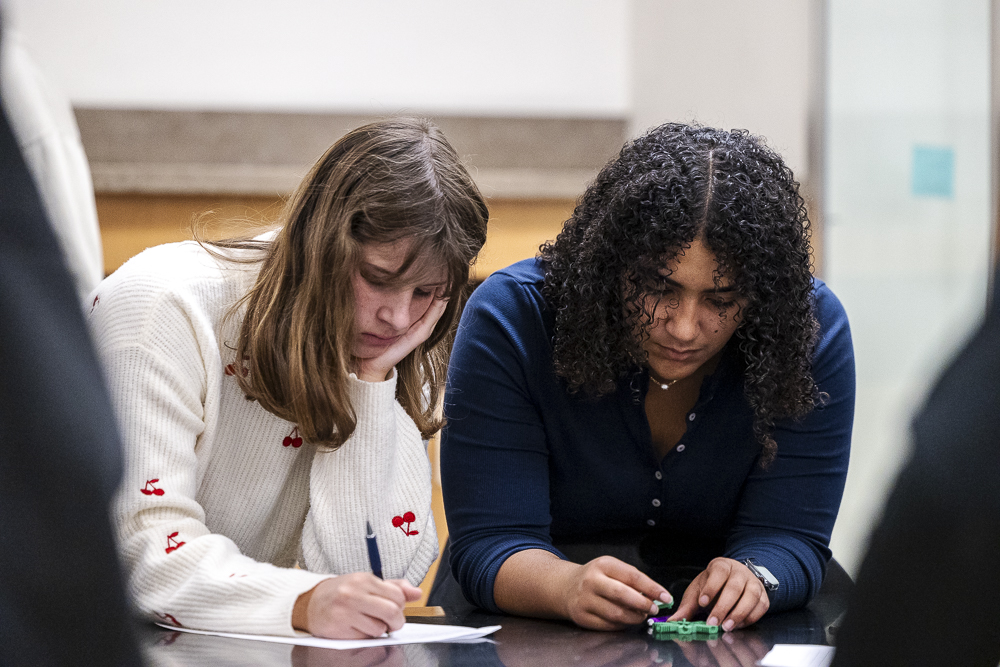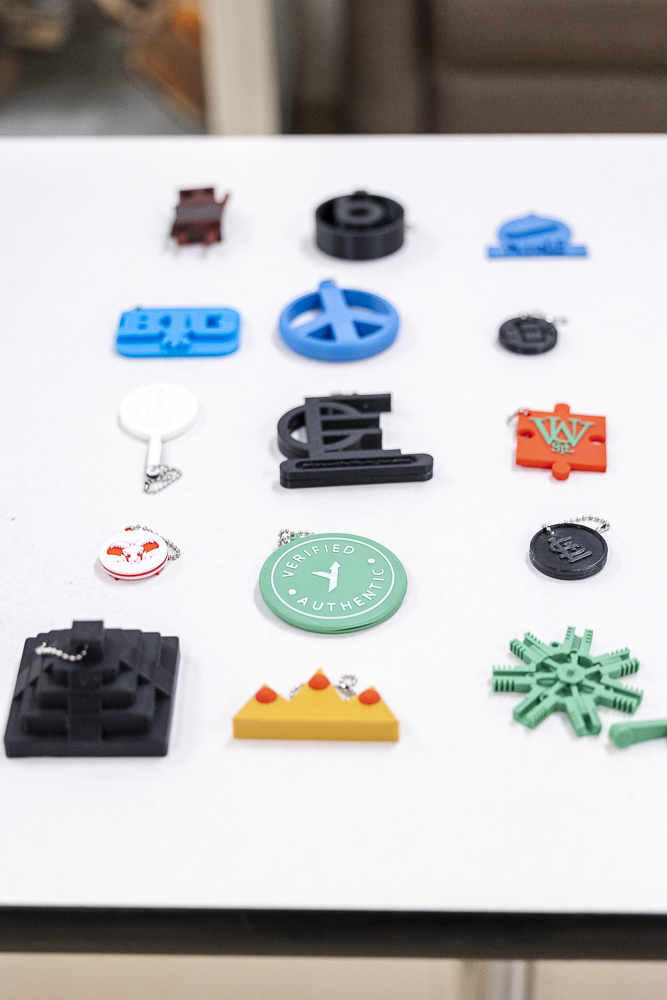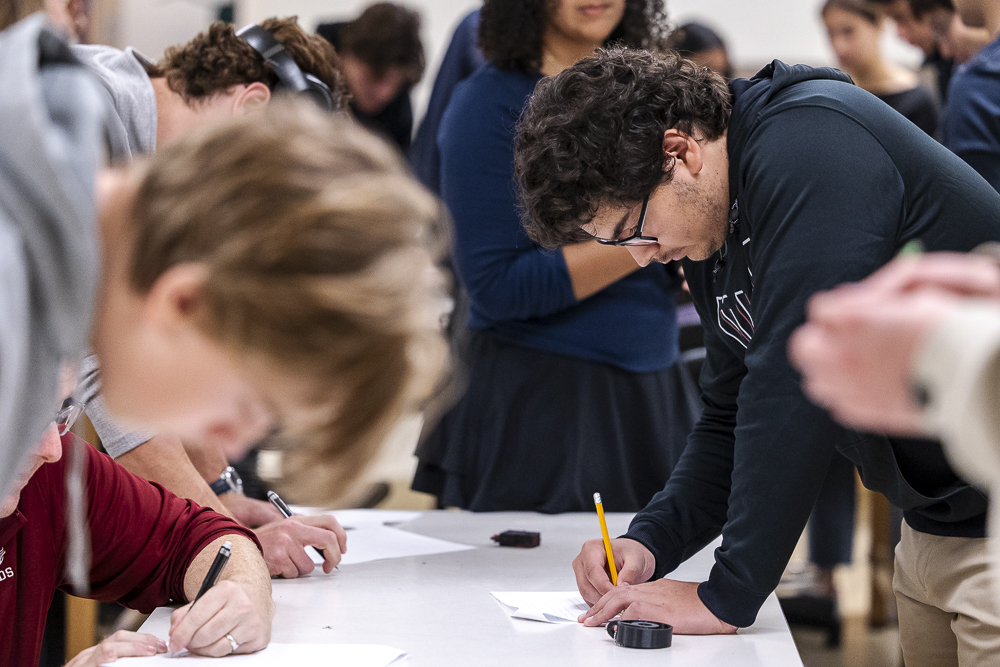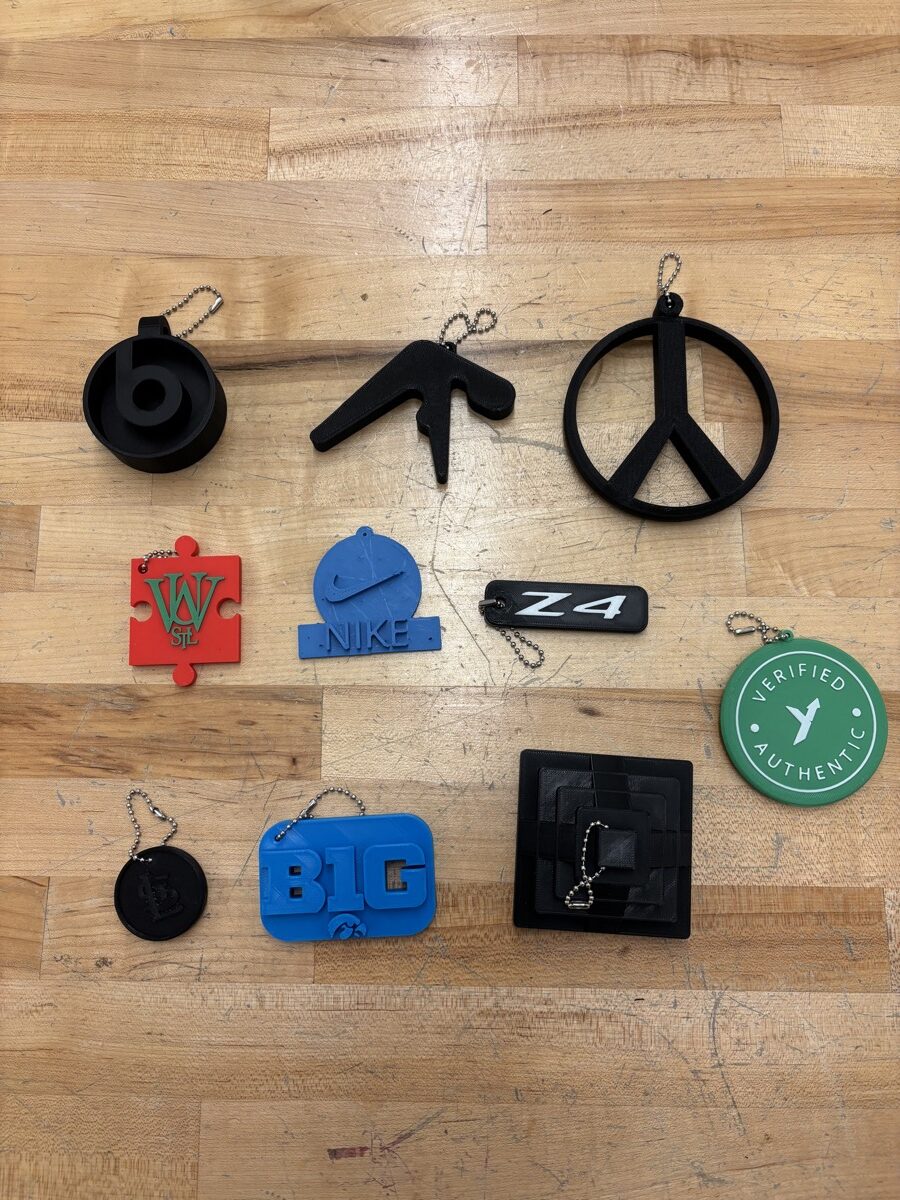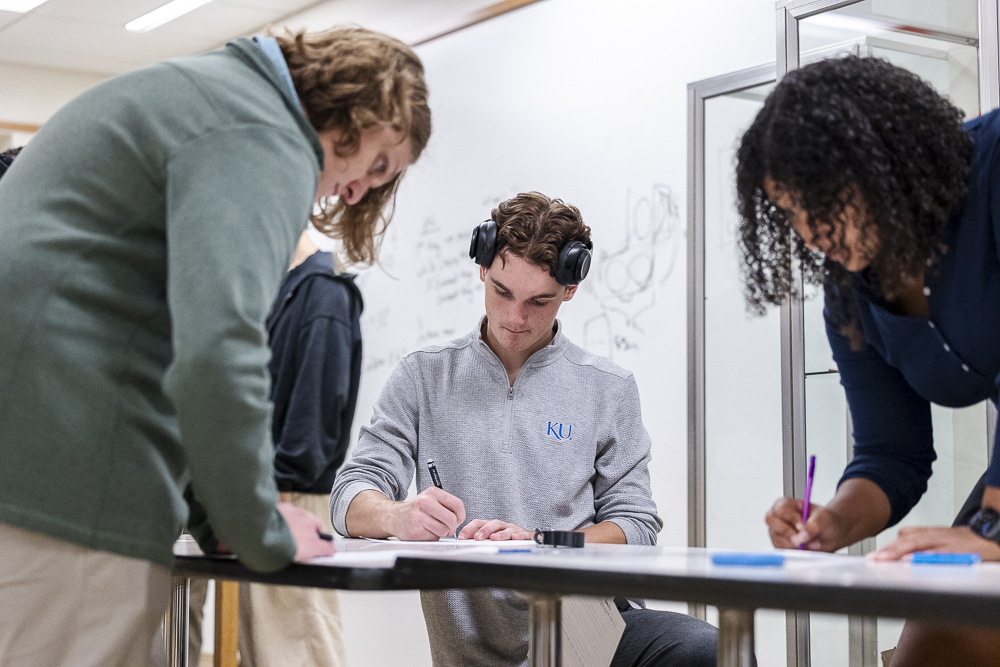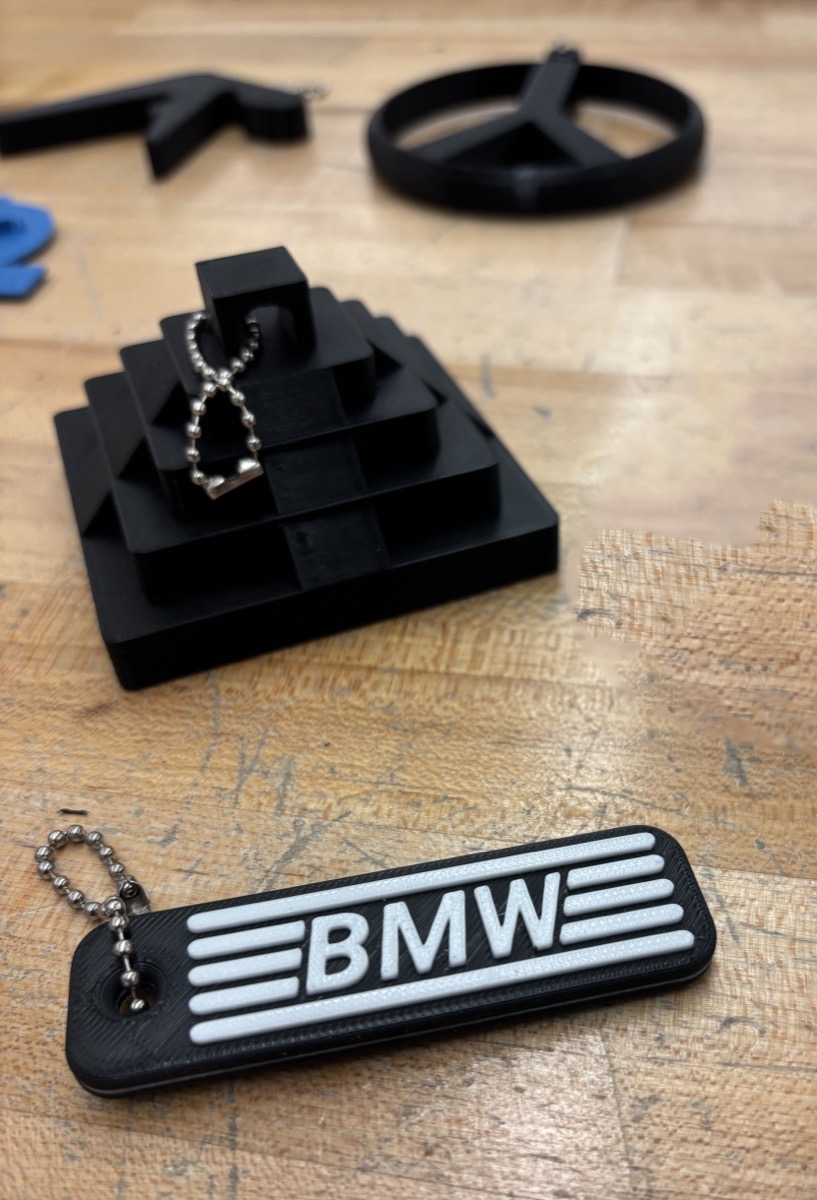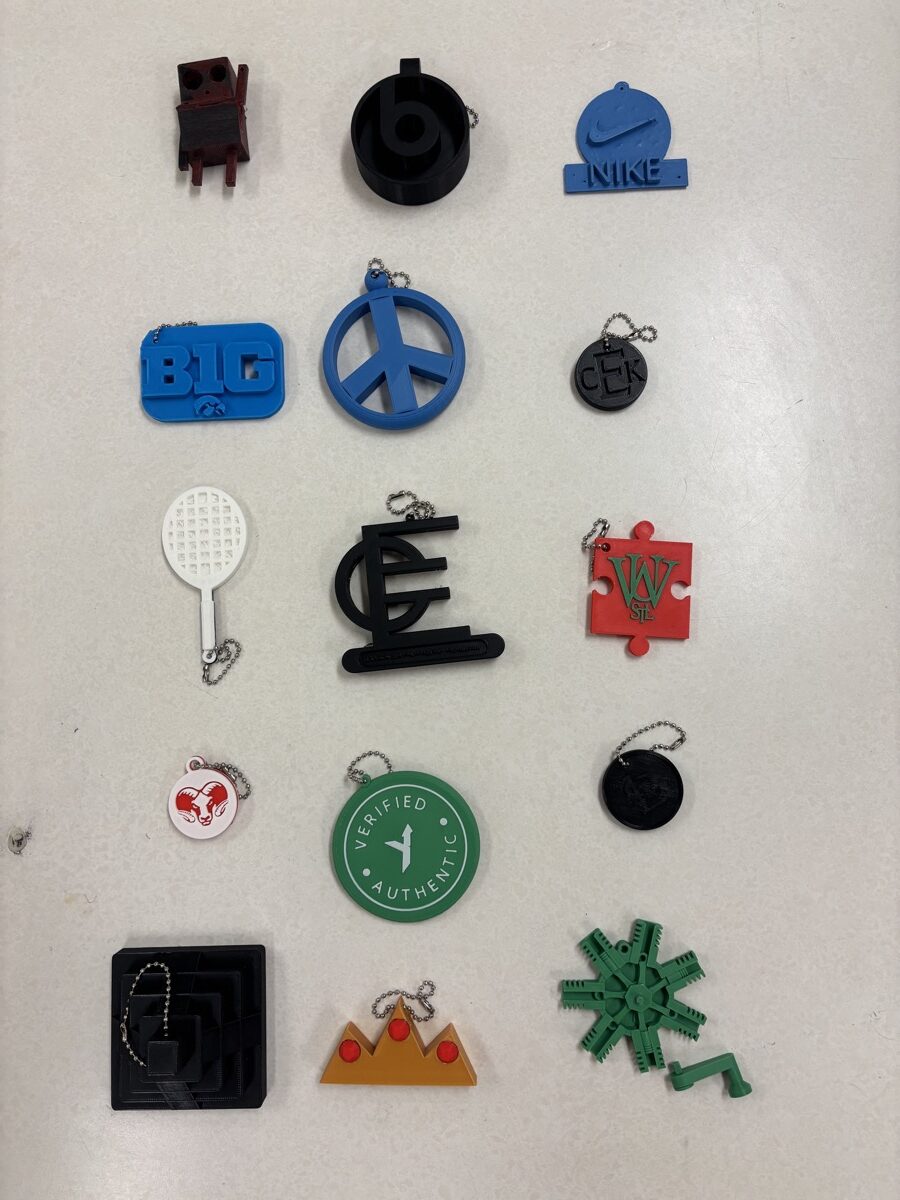Deep in the basement of the MICDS STEM building lies the heart of tinkering in the Upper School. It’s where maker culture flourishes and where robots come to life. Upper School Math and Science Teacher Mike Dorsey set his engineering students on a creative journey to develop their skills in design, prototyping, CAD, 3D printing, and problem-solving, guiding them each step of the way.
There is no way for engineering students to escape the influence of computer-aided design, or CAD. To build their 3D modeling skills, students began by using Onshape, a web-based CAD platform. Once this CAD foundation was established, they embarked on the project: designing a unique keychain or backpack charm for a specific client.
The design process began with students interviewing their client to determine their interests and aesthetics. Next came the core steps of sketching three possible designs, receiving feedback from the client, making revisions, and creating a final 3D model of the design in Onshape. Once the students finalized their designs in Onshape, they partnered with Upper School Maker and Robotics Coordinator Brian Purlee to 3D-print their product. Because 3D printing rarely goes perfectly on the first try, Purlee worked with the students to problem-solve issues, which helped them learn the 3D printing process to optimize the best final product.
The project culminated in a feedback gallery, the final step before delivery, where students proudly displayed their finished work. As classmates circled the tables, they moved from design to design, jotting down both positive and constructive feedback. The air buzzed with on-the-spot reactions: “Wow, how’d you get the letters on there?” and “I like how tall that one is,” or “How did you do this?” It was a friendly, exciting, and illuminating celebration of creativity and ingenuity.
Claire Kaiser ’26 created a keychain in the shape of a puzzle with the WashU logo on it for her friend, who attends WashU and, not surprisingly, enjoys puzzles. “I liked being able to work more with the 3D printer,” she said. “We’ve done this in other classes, but throughout this process and having to print and re-print, it taught me more about the different systems, and I was eventually able to do it on my own, which was really cool. It was something that I then pursued on my own, 3D printing other items with Mr. Purlee.”
The puzzle piece did not come without its challenges. “The most challenging aspect of my piece was figuring out the software to get the logo raised on the keychain,” she said. It was a challenge, but rewarding once I figured it out. It was exciting to see what other people were interested in through their projects. I learned more about my classmates that I wouldn’t have thought to ask otherwise.”
Kurosh Campos ’27 enjoyed exploring the Onshape platform. “It was really fun to mess around with,” he said. “My dad is Mexican, so I wanted to make something with cultural representation. Measurements were challenging because my piece was the pyramid at Chichén Itzá, so every step had to be properly sized and in balance. It was interesting seeing the implementation of text on other people’s projects. One had the Rams logo that my classmate had traced to make her design. It was really fun; I loved it.”
Dorsey was especially impressed with the level of detail and resourcefulness students poured into their designs. “Several students did additional research to learn techniques that were not taught in class to create the 3D models as they envisioned them,” he said. “An issue that came up with multiple designs was the desire to have a two-sided keychain. The technology of 3D printers is limited in this regard, and it was fun to see the different approaches students took to make their design a reality. I allowed students to be their own clients, as this can often be a very personal project. I like to have a gallery event after an assignment like this because it can be powerful to both give and receive feedback within a peer group.
Small engineering projects, such as the keychain project, help students deepen their understanding of real-world design, iteration, and application.
